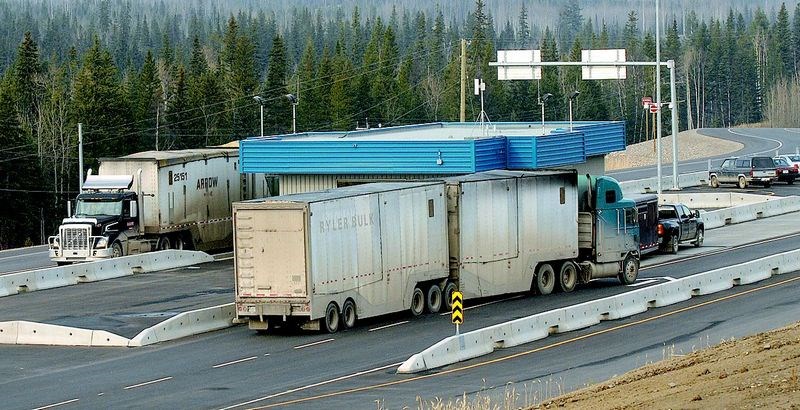Completion of the Red Rock weigh scale would have taken even longer and cost even more if the drastic action of replacing soil saturated by unusually wet weather with new material had not been taken, says a transportation ministry official.
"It wouldn't be done yet and it would've been more costly," Shanna Mason, the ministry's highways operations director said in an interview.
Even as it stands, the project took a year longer than first planned and $9.3 million more than originally budgeted by the time the grand opening took place on Oct. 16, largely because of a decision to remove 600,000 cubic metres of soil because it was deemed too waterlogged.
The decision was made reluctantly, said Mason, because one of the single biggest cost drivers on any roadwork project is the earthworks.
"You don't want to have to truck in any material and you don't want to have to truck out any material," she said. "The most efficient way to build a road is to use the material within the site."
Work began on May 2008, shortly after Delta-based JJM Construction Ltd. was awarded a $19-million contract to carry out the on-site construction, about 30 kilometres south of Prince George, comprised of the weigh scale and four-laning Highway 97 for about five kilometres.
By July, the entire site had been cleared, grubbed and stripped but then the rain started to impede progress. And then came the wettest August in 25 years, when three times the average rainfall fell preventing JJM from moving any equipment onto the site.
September was drier but JJM was limited on what it could do whenever it did rain because the soil, became "super saturated" and by the start of October the site was shut down for the winter - a bit earlier than usual due to moisture and short days.
But the winter of 2008-09 was characterized by a snowpack 150 per cent above normal and the following spring saw above-average rainfall, which kept the soils unworkable.
"Typically, they mobilize back to the site in May but I would say they weren't up and running until about mid-June, again trying to wait out the soils," said Mason.
By that point, the contractor has lost at least three months of construction time due to the excessive moisture, runoff from the winter snow pack remained high and the soil's quality wasn't getting any better.
Mason described the soil at the site as a fine-grain "till-clay."
"You can use these kinds of silts and clays in the road base and you can get the compaction you need provided they're dry when you're rolling them and working them," she said.
However, it was simply too wet to work and they arranged to move it out to nearby agricultural sites and bring in a more gravel-like material from the Cale Creek pit, less than 15 kilometres away.
However, the work involved removing over 600,000 cubic metres and the average dump truck can carry just eight cubic metres at a time, which works out to 75,000 loads for which JJM was compensated.
By July, JJM was making good progress on the earthworks and was able to continue until November 2009 before doing a winter shutdown. In April 2010, JJM returned to the site to complete the project.
The option of requiring JJM to wait until the site had dried out rather than bring in new material was unrealistic, Mason said.
"If we had have said in June when they came back to the site, 'we you want you to wait until it dries out and we're willing to delay the completion date,' there are costs to us for that because we've got their equipment sitting there," she said. "They can't put it to work somewhere else and you'd still have to pay them their daily rates for those excavators sitting up there that are not being used.
"Now, you might get to a place where you say 'we'll pay you the cost of demobilizing your equipment from this site and when it dries out and we need you, we'll pay you to come back' but then there are some opportunity losses that we would potentially be responsible for because they can't really commit themselves to go and do work anywhere else."
On the upside, Mason said they've probably ended up with a better-performing roadbed because a higher-quality material was brought in, albeit at greater expense. "They're better draining aggregates," she said.

.png;w=120;h=80;mode=crop)

